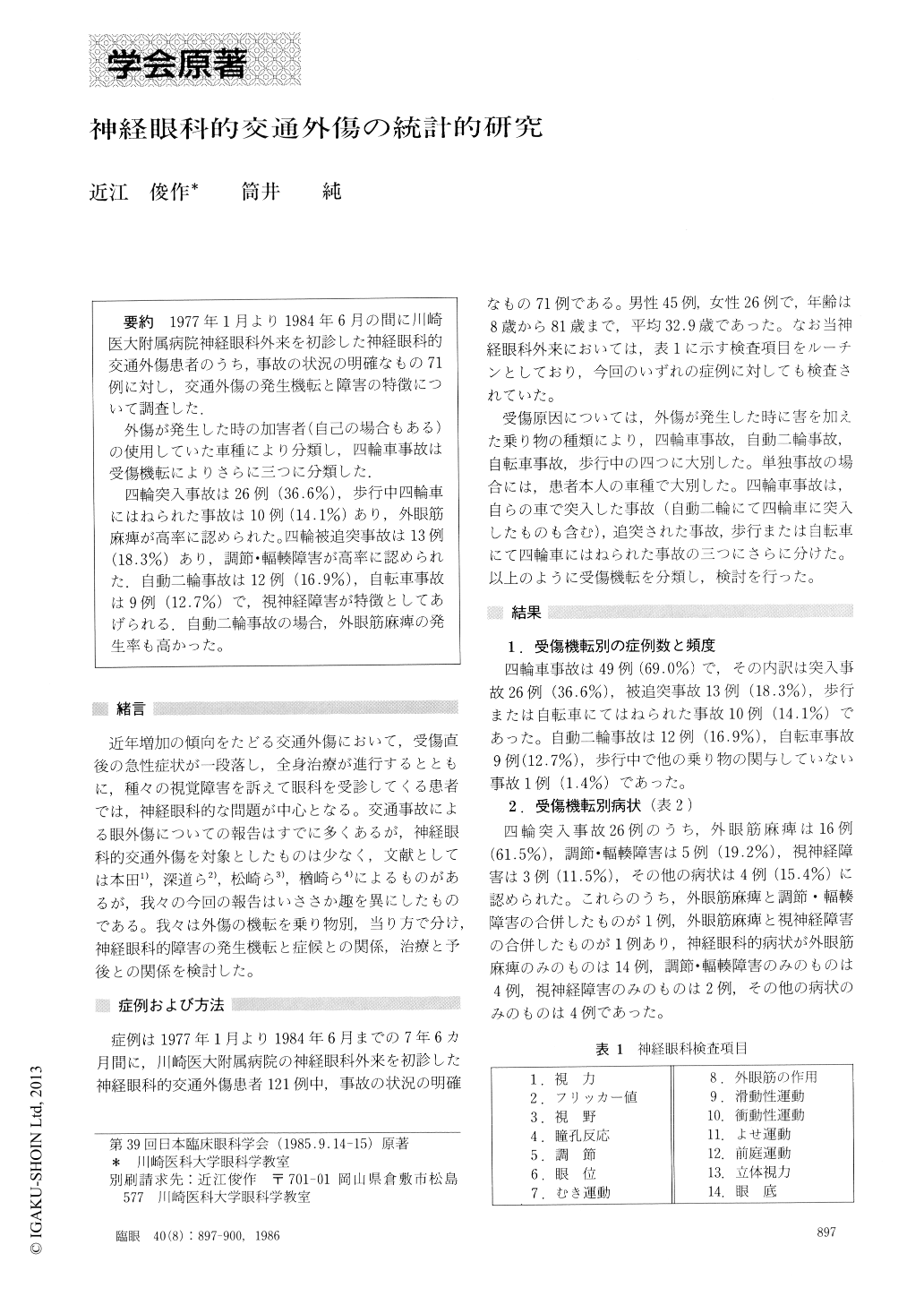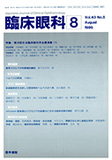Japanese
English
- 有料閲覧
- Abstract 文献概要
- 1ページ目 Look Inside
1977年1月より1984年6月の間に川崎医大附属病院神経眼科外来を初診した神経眼科的交通外傷患者のうち,事故の状況の明確なもの71例に対し,交通外傷の発生機転と障害の特徴について調査した.
外傷が発生した時の加害者(自己の場合もある)の使用していた車種により分類し,四輪車事故は受傷機転によりさらに三つに分類した.
四輪突入事故は26例(36.6%),歩行中四輪車にはねられた事故は10例(14.1%)あり,外眼筋麻痺が高率に認められた.四輪被追突事故は13例(18.3%)あり,調節・輻輳障害が高率に認められた.自動二輪事故は12例(16.9%),自転車事故は9例(12.7%)で,視神経障害が特徴としてあげられる.自動二輪事故の場合,外眼筋麻痺の発生率も高かった.
We evaluated a consecutive series of 71 cases with neuroophthalmological involvements after traffic acci-dents over the foregoing 7 years and a half. We classi-fied the cases into 4 groups according to the mode of transport at the time of injury : transportation by auto-mobile, motor cycle, bicycle or on foot.
We could discern some general tendencies according to the mode of conveyance and the actual type of injury. In 26 cases, in which accidents occurred with the sub-jects in automobiles, ophthalmoplegia was the most common eye injury in 62%. In 13 cases, in which the injury resulted from rear-end collisions, accommoda-tion-convergence disturbances were the major sign in 77%. In 10 cases who were victims knocked down by an automobile, external ophthalmoplegia was the main injury in 70%. In 12 cases with motor cycle accidents, external ophthalmoplegia (50%) and optic nerve injury (25) were prominent. In 9 bicycle-riders at the time of accident, optic nerve injury was the main lesion in 78%.
Rinsho Ganka (Jpn J Clin Ophthalmol) 40(8) : 897-900,1986

Copyright © 1986, Igaku-Shoin Ltd. All rights reserved.


